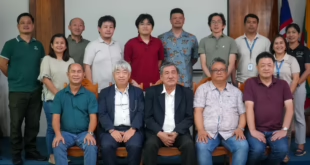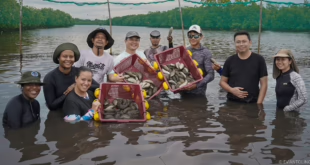By Development Communication Section

Algal biotechnology is presently considered as one of the most promising forefronts to provide sustainable sources of food, feed, and biofuel among others. Thus, this year’s theme for the 9th Asia-Pacific Conference on Algal Biotechnology was “Algae for Food, Feed, Fuel and Beyond.” The conference was held from 15 to 18 November 2016 at the Century Park Hotel, Bangkok, Thailand.
During the conference, SEAFDEC/AQD Senior Technical Assistant Ms. Rena Santizo-Taan discussed the results of her study on the use of enriched Ulva pertusa meal as a feed ingredient in abalone juvenile diet. She presented that enriched U. pertusa meal can be utilized as a feed ingredient in abalone juvenile diets, substituting fishmeal and soybean meal in providing up to 30% of the protein.
On the other hand, Technical Assistants Ms. Jonalyn Mateo and Ms. Hananiah Sollesta presented posters on their studies “Photosynthesis rate and pigments of Kappaphycus alvarezii (Doty) at different pH, salinity and irradiance” and “Photosynthesis and growth of Caulerpa lentillifera J. Agardh at different nitrogen, salinity and irradiance levels,” respectively.
Ms. Mateo’s poster presentation revealed that nursery-produced K. alvarezii can be best grown in rearing water with a salinity of 35 ppt, pH 8 and under 350 µmol m-2s-1 of irradiance.
Meanwhile, Ms. Sollesta’s poster showed that C. lentillifera could be grown at a wide range of salinities between 25 to 35 ppt. Optimal irradiance is 155μmol m-2 s-1 and nitrogen level is best at 1.8 mM.

 SEAFDEC/AQD Southeast Asian Fisheries Development Center | Aquaculture Department
SEAFDEC/AQD Southeast Asian Fisheries Development Center | Aquaculture Department



